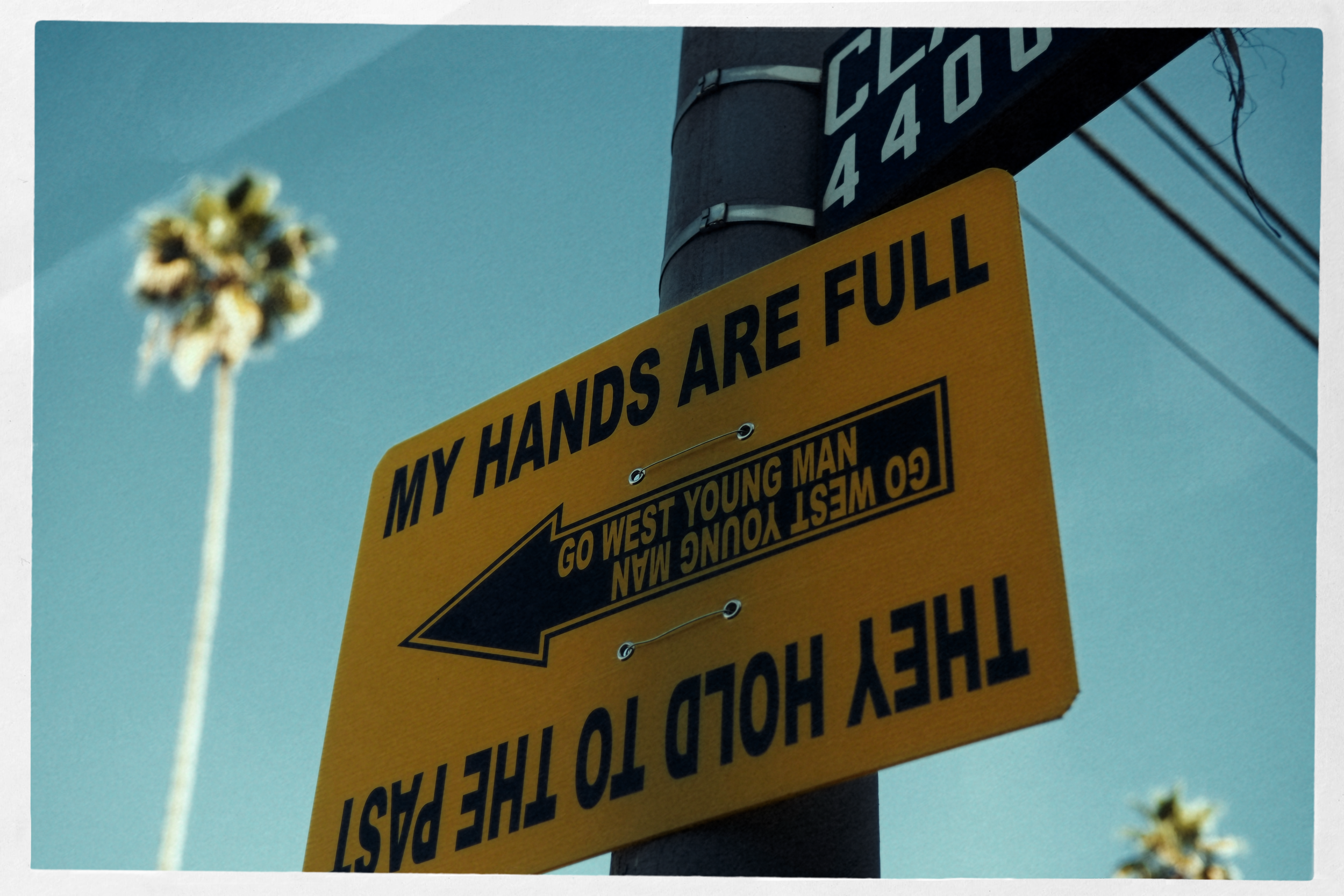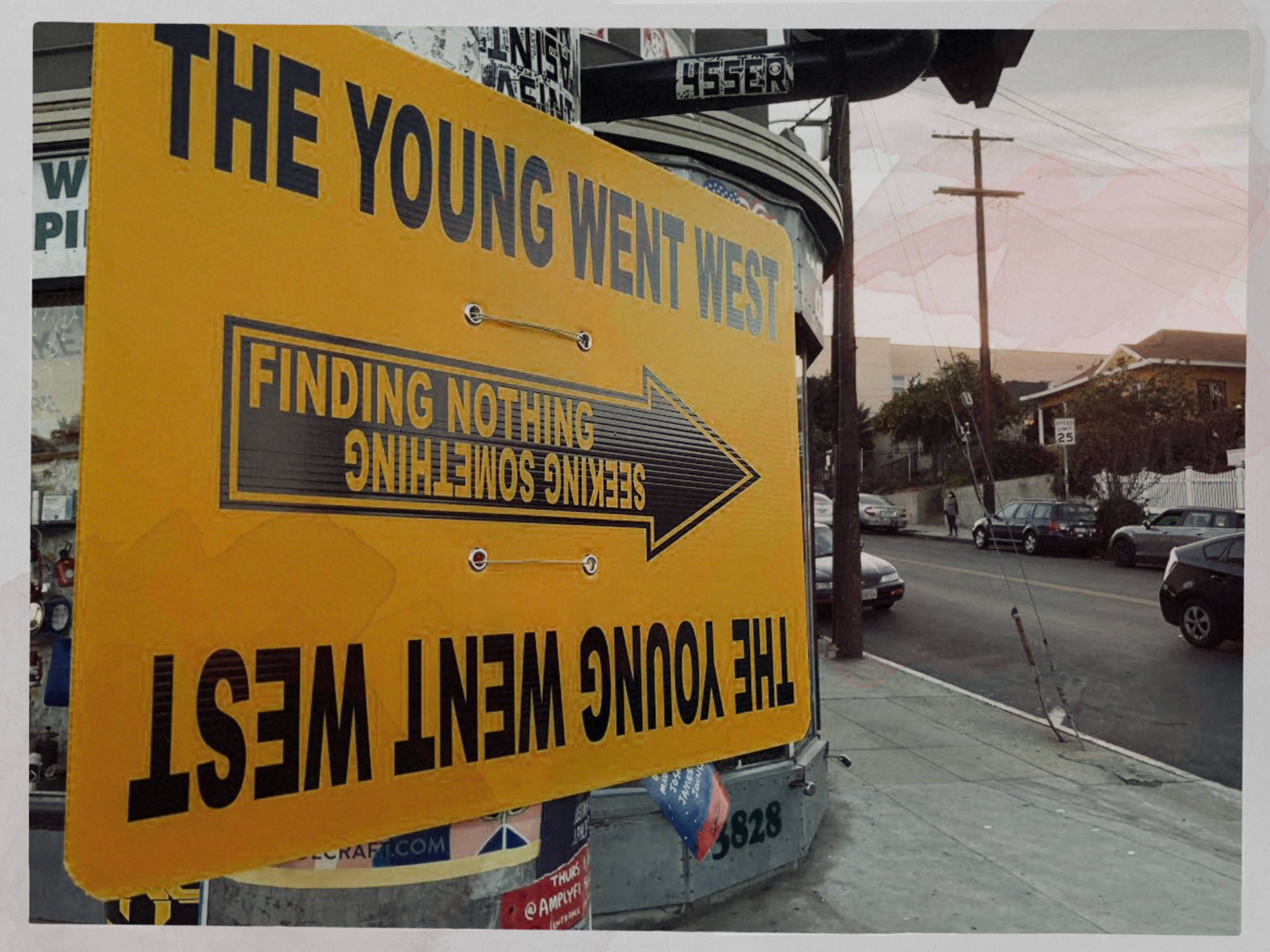Jetsam
If you’ve spent time in Los Angeles, you’ve likely spotted a number of yellow chloroplast signs inscribed in the vaguely codified, secret language of film production: BASE CAMP; HUNGRYMAN; TRUCKS. The signs are as ubiquitous here as the palm trees and can be found in every quarter of the city; indeed, after a few months in LA, you stop noticing them. They simply fade into the urban scape - 18 by 24 inch flashes of yellow amid the graffiti, band stickers, pasted posters, street markers.
I work on the fringes of the television advertising business so recognize the names of clients emblazoned on the signage. Production company titles (DOOMSDAY; BISCUIT; GHOST ROBOT) and set directions (CATERING; EXTRAS; CREW) become a kind of shorthand for advertising and feature-filmmaking itself. And the films being made - ads and features that begin on a film set somewhere you’d never hope to find without that smattering of yellow chloroplast lighting the way - promote and reflect a culture of consumption and myth-making that underpins “The American Dream”.
The big existential doubts - Who am I? Why am I here? What is my purpose? - are increasingly reframed as questions of what you can buy or the fantasy life you might lead. You’re the sum total of a Honda, a 2500 square foot house in a middling school district, a 401K. You’re a winner or a loser. A have or a have not.
American cultural vacancy and myth-making are weighty themes, but with Jetsam, I aim to counter self-serious analysis with a touch of absurd whimsy. So I’ve coopted film signage to communicate feelings of existential confusion and non-belonging. They’re obtuse, bizarre (and hopefully a little fun), and are meant to capture the emotions of an imagined new arrival in LA - someone alienated, confused, but hoping to be a part of things. Someone seeking meaning in a world that has no real meaning at all. Someone who suspects “The American Dream” is little more than a lavishly-produced commercial repackaged as cultural identity.
I’ve hung these signs across the city. Many have been “stolen” - in itself an interesting commentary on materialism and the acquisition of “stuff” - but those that survive have a way of hiding in plain sight - forms so familiar to the eye that they’re easily overlooked and rendered virtually invisible. I see them as metaphorical, LA-specific “Messages in Bottles”, each adrift on a sea of highway onramps, trash heaps, signposts and fences and driveways and overpasses.
They’re ephemeral. Eventually all will be stolen, papered over, torn down, repurposed, forgotten. But while they remain, they’re quiet counters to deafening, manufactured myth, and proof that that “Someone” existed, if only for a moment.







